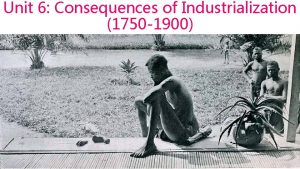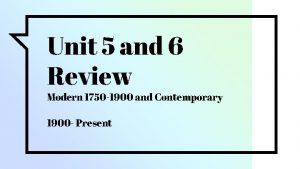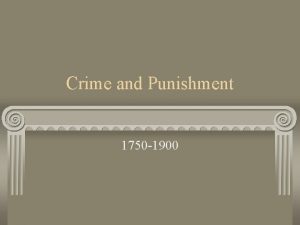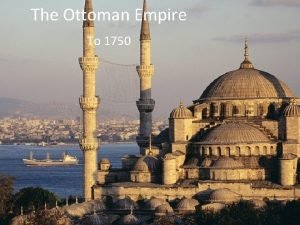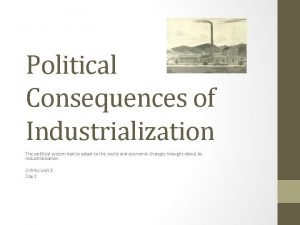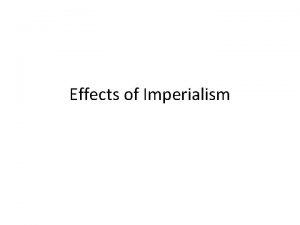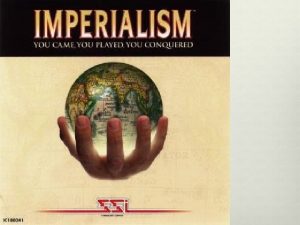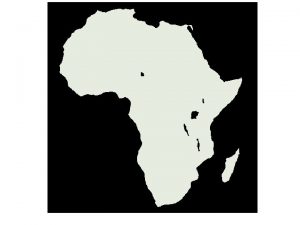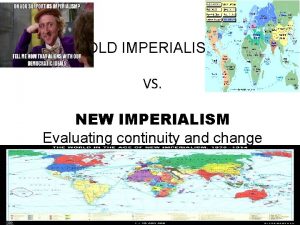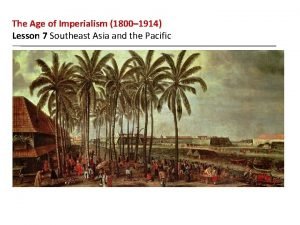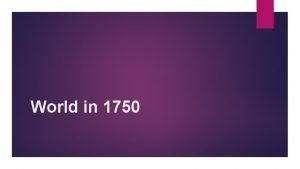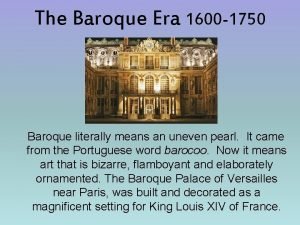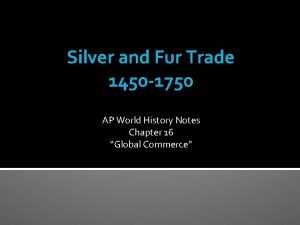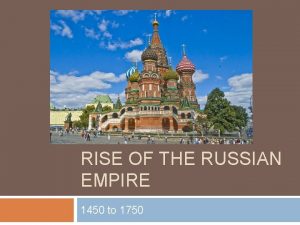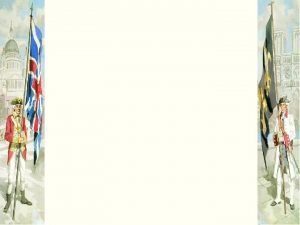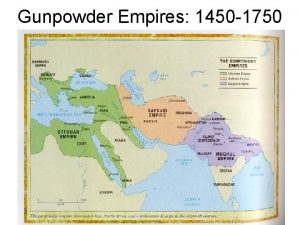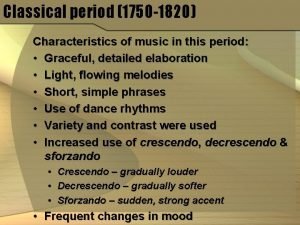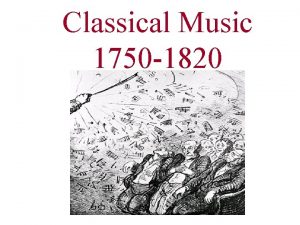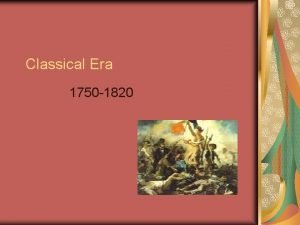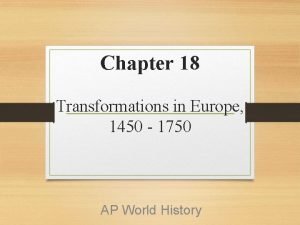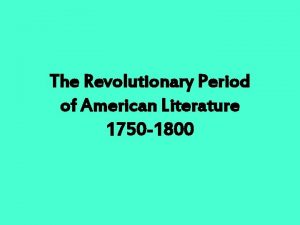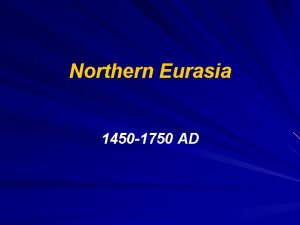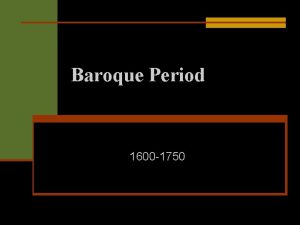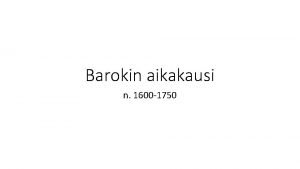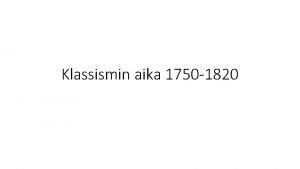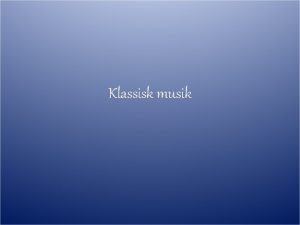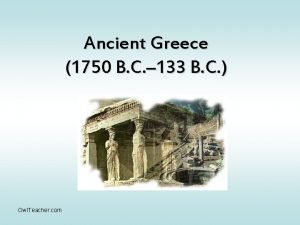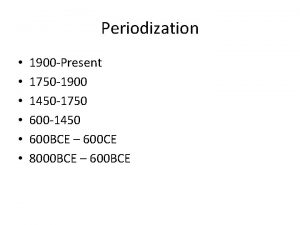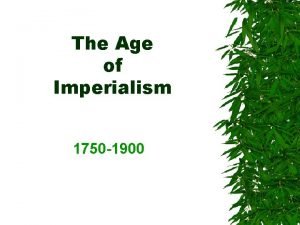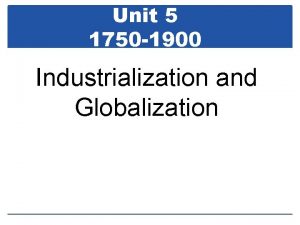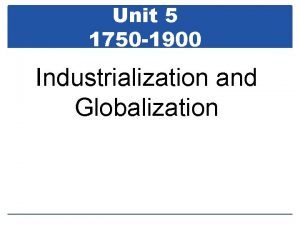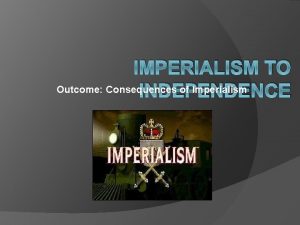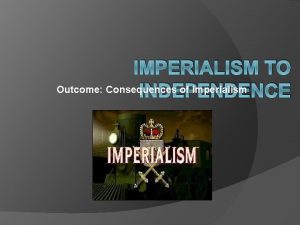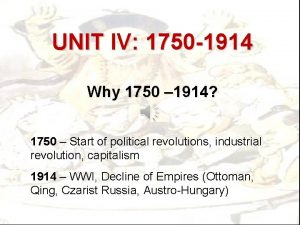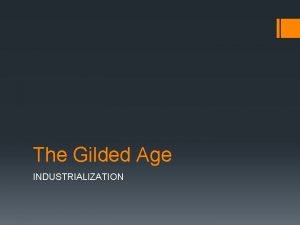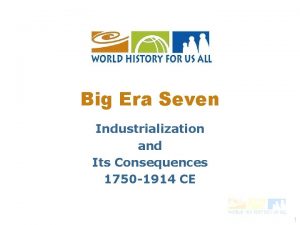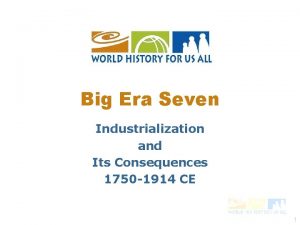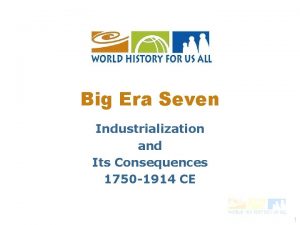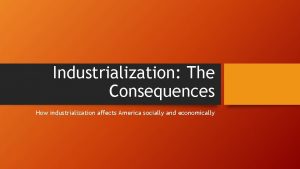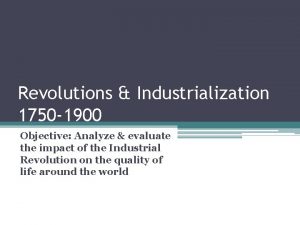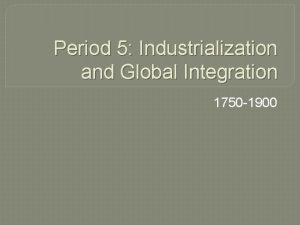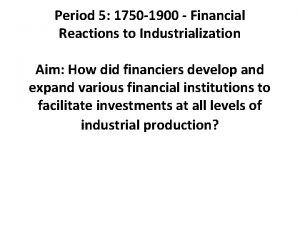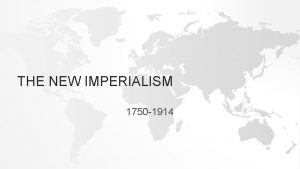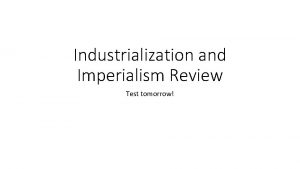Consequences of Industrialization Unit 6 1750 1900 Imperialism







































- Slides: 39

Consequences of Industrialization Unit 6 1750 -1900 Imperialism and Migration 6. 1 Rationales for imperialism 6. 2 State expansion 6. 3 Indigenous Responses to state expansion 6. 4 Global Economic Development 6. 5 Economic Imperialism 6. 6 Causes of Migration in an interconnected World 6. 7 Effects of Migration 6. 8 Causation in Imperial age

Rationales for Imperialism from 1750 to 1900 (Topic 6. 1) Explain how ideologies contributed to the development of imperialism from 1750 to 1900.

Rationales for Imperialism from 1750 to 1900 (Topic 6. 1) A range of cultural, religious, and racial ideologies were used to justify imperialism, including Social Darwinism, nationalism, the concept of the civilizing mission, and the desire to religiously convert indigenous populations.

Activity Directions In this exercise you will be exploring the motives behind the European rush to create colonial empires at the end of the 19 th century. Examine the placards: Describe what you see on the placard-it is ok to make guesses-talk it out with your partner. Determine which of the five categories the artifact reveals. There may be more than one motive. You will be assigned one motive to fully explain.

POLITICAL motives were based on a nation’s desire to gain power, to compete with other European countries, to expand territory, to exercise military force, to gain prestige by winning colonies, and to boost national pride and security.

ECONOMIC motives included the desire to make money, to expand control foreign trade, to create new markets for products, to acquire raw materials and cheap labor, to compete for investments and resources, and to export industrial technology and transportation methods.

RELIGIOUS motives included the desire to spread Christianity, to protect European missionaries in other lands, to spread European values and moral beliefs, to educate peoples of other cultures, and to end the slave trade in Africa.

EXPLORATORY motives were based on the desire to explore “unknown” or uncharted territory, to conduct medical searches for the causes and treatment of diseases, to go on an adventure and to investigate “unknown” lands and cultures.

IDEOLOGICAL motives were based on cultural values such as the belief that the white race was superior, other cultures were “primitive, ” Europeans should “civilize” peoples in other parts of the world, great nations should have empires, and only the strongest nations will survive.

A Open-shaft diamond mining at Kimberley, South Africa, in 1872

B A Methodist Sunday School at Guiongua, Angola, 1925

c Germans taking possession of Cameroon in 1881

D Quote from explorer Henry Stanley in 1882 – looking for the

E Africans bringing ivory to the wagons in South Africa, c. 1860 E

F Sketch map of Central Africa, showing Dr. Livingstone’s exploration

G An advertisement for Pears’ Soap from the 1890 s, and one stanza of the British poet Rudyard Kipling’s poem, The White Man’s Burden, written in 1899 in response to the American take over of the Philippine Islands

HMrs. Maria C. Douglas, doctor and missionary, and the first class of pupil nurses in Burma, in 1888

I British cartoon showing the Chinese being savaged by European powers, and the poem The Partition of China, 1897

J Bagged groundnuts in pyramid stacks in West Africa

K

L British Lipton Tea advertisem ent in the 1890 s

M British cartoon “The Rhodes Colossus, ” showing Cecil Rhodes’ vision of making Africa “all British from Cape to Cairo, ” 1892

N Epitaph and quote from missionary and explorer David Livingstone, the epitaph reads: Brought by faithful hands over land sea, Here rests David Livingstone, Missionary, Traveller, Philanthropist. Born March 19, 1813, at Blantyre, Lanarkshire. Died May 1, 1873, at Chitambo’s Village, Ulala. For 30 years his life was spent in an unwearied effort to evangelize the native races, to explore the undiscovered secrets, to abolish the desolating slave trade, of Central Africa, where with his last words he wrote, “All I can add in my solitude, is, May the Heaven’s rich blessing come down on everyone, American, English, or Turk, who will help to heal this open sore of the world. ”

O An imperial yacht passing through the Suez Canal in Egypt at the opening of the canal in 1870

Placard 3. 2 A Open-shaft diamond mining at Kimberley, South Africa, in 1872 Imperial motives students might see here are: Economic: African labor, exploiting natural resources for profit Ideological: Europeans treating Africans as inferior

Placard 3. 2 B A Methodist Sunday School at Guiongua, Angola, 1925 Imperial motives students might see here are: Religious: Europeans spreading Christian values and education Ideological: teaching European customs and beliefs

Placard 3. 2 C Germans taking possession of Cameroon in 1881 Imperial motives students might see here are Political: flag shows national identity or desire to possess new territory, European and African leaders meeting, European military presence Exploratory: exploring foreign lands

Placard 3. 2 D Quote from explorer Henry Stanley in 1882 – looking for the source of the Nile An imperial motive students might see here is: Ideological: belief in superiority of Europeans or that Europeans should “civilize” Africa

Placard 3. 2 E Africans bringing ivory to the wagons in South Africa, c. 1860 An imperial motive students might see here is: Economic: collecting African resources Ideological: European’s making Africans work

Placard 3. 2 F Sketch map of Central Africa, showing Dr. Livingstone’s exploration An imperial motive students might see here is: Exploratory: interest in unexplored territories, mapping geographic features of Africa Dr. Livingstone’s goal was to find the source of the Nile River

Placard 3. 2 G An advertisement for Pears’ Soap from the 1890 s, and one stanza of the British poet Rudyard Kipling’s poem, The White Man’s Burden, written in 1899 in response to the American take over of the Philippine Islands Imperial motives students might see here are: Ideological: belief in European superiority, need to “civilize” captive peoples, need to cleanse “dark corners of earth” Economic: boats transporting goods to colonies, advertisement to sell a product

Placard 3. 2 H Mrs. Maria C. Douglas, doctor and missionary, and the first class of pupil nurses in Burma, in 1888 Imperial motives students might see here are: Ideological: teaching European values Religious: educating people of other cultures

Placard 3. 2 I British cartoon showing the Chinese being savaged by European powers, and the poem The Partition of China, 1897 Imperial motives students might see here are: Political: Europeans depicted as animals competing for piece of China Economic: desire to trade in China to make cash Religious: Chinese depicted as heathen, calls on Christian duty to preach in China Ideological: belief that foreigners should be “civilized” by Europeans

Placard 3. 2 J Bagged groundnuts in pyramid stacks in West Africa An imperial motive students might see here is: Economic: Africans transporting indigenous goods

Placard 3. 2 K French capture of the citadel of Saigon, Vietnam An imperial motive students might see here is: Political: exerting military force, battling for possession of territory, carrying flags to establish political control

Placard 3. 2 L British Lipton Tea advertisement in the 1890 s Imperial motive students might see here are: Economic: goods from Ceylon transported to London, use of indigenous labor and resources, exportation of industrial technology Political: gaining national prestige through international trade

Placard 3. 2 M British cartoon “The Rhodes Colossus, ” showing Cecil Rhodes’ vision of making Africa “all British from Cape to Cairo, ” 1892 Imperial motives students might see here are: Political: desire to control African territory, desire to boost national pride and gain power by winning colonies, desire to have military presence) Exploratory: exploring or venturing into unknown territory

Placard 3. 2 N Epitaph and quote from missionary and explorer David Livingstone, the epitaph reads: Brought by faithful hands over land sea, Here rests David Livingstone, Missionary, Traveller, Philanthropist. Born March 19, 1813, at Blantyre, Lanarkshire. Died May 1, 1873, at Chitambo’s Village, Ulala. For 30 years his life was spent in an unwearied effort to evangelize the native races, to explore the undiscovered secrets, to abolish the desolating slave trade, of Central Africa, where with his last words he wrote, “All I can add in my solitude, is, May the Heaven’s rich blessing come down on everyone, American, English, or Turk, who will help to heal this open sore of the world. ” Imperial motives students might see here are: Religious: missionary who spreads his faith, desire to abolish the slave trade Exploratory: traveled to discover secrets of Africa

Placard 3. 2 O An imperial yacht passing through the Suez Canal in Egypt at the opening of the canal in 1870 Imperial motives students might see here are: Economic: exportation of transportation methods to improve trade Political: boosting national pride and prestige by controlling foreign territories
 Def of industrialization
Def of industrialization 1750-1900 portfolio map
1750-1900 portfolio map Crime and punishment 1750 to 1900
Crime and punishment 1750 to 1900 Ottoman empire 1750
Ottoman empire 1750 Consequences of industrialization
Consequences of industrialization Positive consequences of imperialism
Positive consequences of imperialism Imperialism 1900
Imperialism 1900 Imperialism and industrialization
Imperialism and industrialization Causes of new imperialism
Causes of new imperialism How were old imperialism and new imperialism similar?
How were old imperialism and new imperialism similar? Contrast siam's fate to that of burma and vietnam
Contrast siam's fate to that of burma and vietnam Unit 10, unit 10 review tests, unit 10 general test
Unit 10, unit 10 review tests, unit 10 general test Mughal empire 1450 to 1750
Mughal empire 1450 to 1750 What period lasted from 1750-1825?
What period lasted from 1750-1825? It is an era from 1750-1820
It is an era from 1750-1820 Baroque period
Baroque period Silver trade 1450 to 1750
Silver trade 1450 to 1750 Russia 1450
Russia 1450 Map of north america 1763
Map of north america 1763 Neoclassicism (1750–1850)
Neoclassicism (1750–1850) Classical music has less complicated texture
Classical music has less complicated texture Bach 1750
Bach 1750 1685 1750
1685 1750 Land based empires 1450 to 1750
Land based empires 1450 to 1750 Franz joseph haydn characteristics of music
Franz joseph haydn characteristics of music Music of classical period 1750 to 1820
Music of classical period 1750 to 1820 1820-1750
1820-1750 Europe map 1750
Europe map 1750 Dynamics of baroque period
Dynamics of baroque period What is the revolutionary period in american literature
What is the revolutionary period in american literature Japan 1450-1750
Japan 1450-1750 Johaan sebastian bach
Johaan sebastian bach Puhelaulunomaisia
Puhelaulunomaisia 1750-1825
1750-1825 Koloniale uitbreiding na 1750
Koloniale uitbreiding na 1750 Istumajärjestys hautajaisissa
Istumajärjestys hautajaisissa Tonsättare född1678
Tonsättare född1678 Ancient greece 1750 b.c-133 b.c answers
Ancient greece 1750 b.c-133 b.c answers 1750-600
1750-600 Linea de tiempo de 1750 a 1950
Linea de tiempo de 1750 a 1950
